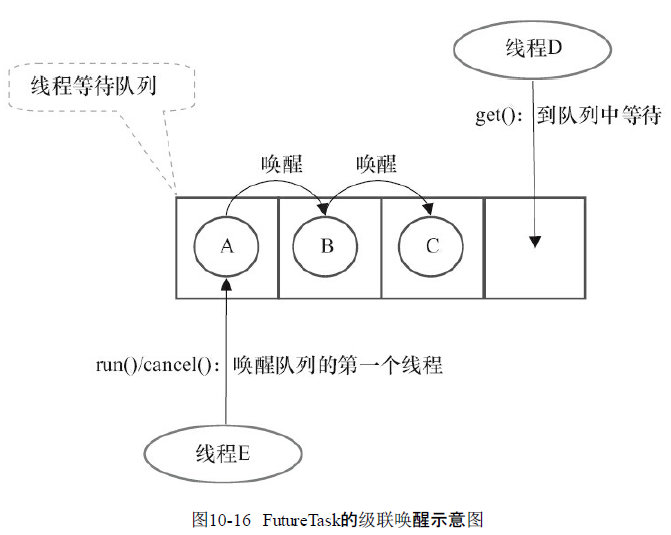本章介绍了Executor框架的整体结构和成员组件,并以ThreadPoolExecuto、ScheduledThreadPoolExecuto、FutureTask三个核心成员类为例来剖析内部原理。
Java的线程既是工作单元,也是执行机制。从JDK 5开始,把工作单元与执行机制分离开
来。工作单元包括Runnable和Callable,而执行机制由Executor框架提供。
Executor框架简介
Executor框架的两级调度模型
应用程序通过Executor框架控制上层的调度;而下层的调度由操作系统内核控制,下层的调度不受应用程序的控制。
Executor框架的结构与成员
- Executor框架主要由3大部分组成如下
- 任务:Runnable接口或Callable接口。
- 任务的执行:Executor、ExecutorServic
- 异步计算的结果:FutureTask
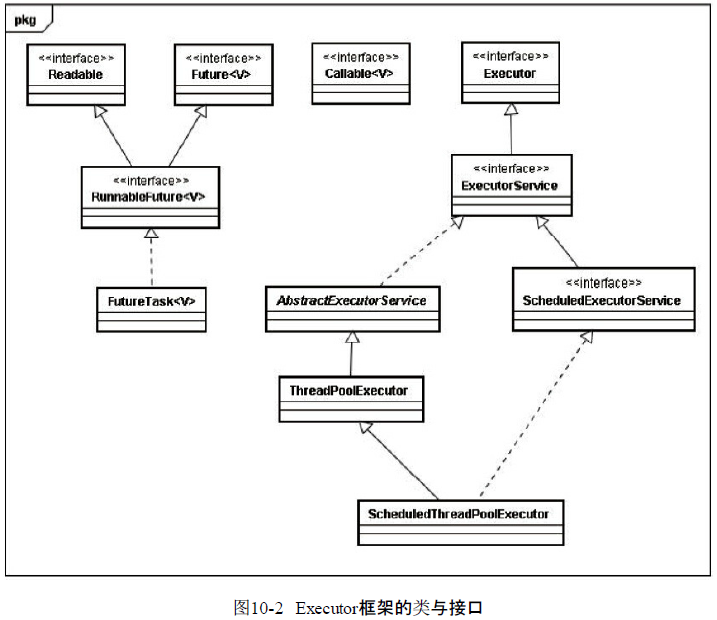
- Executor框架的成员
本节将介绍Executor框架的主要成员:ThreadPoolExecutor、ScheduledThreadPoolExecutor、Future接口、Runnable接口、Callable接口和Executors。
- ThreadPoolExecutor
- FixedThreadPoo
- SingleThreadExecuto
- CachedThreadPoo
- ScheduledThreadPoolExecutor
- ScheduledThreadPoolExecutor
- SingleThreadScheduledExecutor
- Future接口
- Runnable接口和Callable接口
ThreadPoolExecutor详解
Executor框架最核心的类是ThreadPoolExecutor,它是线程池的实现类,主要由下列4个组件构成。
- corePool:核心线程池的大小。
- maximumPool:最大线程池的大小。
- BlockingQueue:用来暂时保存任务的工作队列。
- RejectedExecutionHandler:达到了最大线程池大小且工作队列已满,execute()方法将要调用的Handler。
通过Executor框架的工具类Executors,可以创建3种类型的ThreadPoolExecutor。
FixedThreadPool
FixedThreadPool被称为可重用固定线程数的线程池。下面是FixedThreadPool的源代码实现。
1 | public static ExecutorService newFixedThreadPool(int nThreads) { |
SingleThreadExecutor
SingleThreadExecutor是使用单个worker线程的Executor。下面是SingleThreadExecutor的源代码实现。
1 | public static ExecutorService newSingleThreadExecutor() { |
CachedThreadPool
CachedThreadPool是一个会根据需要创建新线程的线程池。下面是创建CachedThreadPool的源代码。
1 | public static ExecutorService newCachedThreadPool() { |
ScheduledThreadPoolExecutor详解
ScheduledThreadPoolExecutor继承自ThreadPoolExecutor。它主要用来在给定的延迟之后运行任务,或者定期执行任务。
ScheduledThreadPoolExecutor的运行机制

ScheduledThreadPoolExecutor的实现
ScheduledThreadPoolExecutor会把待调度的任务(ScheduledFutureTask)放到一个DelayQueue中。ScheduledFutureTask主要包含3个成员变量,如下。
- long型成员变量time,表示这个任务将要被执行的具体时间。
- long型成员变量sequenceNumber,表示这个任务被添加到ScheduledThreadPoolExecutor中的序号。
- long型成员变量period,表示任务执行的间隔周期。
任务执行步骤: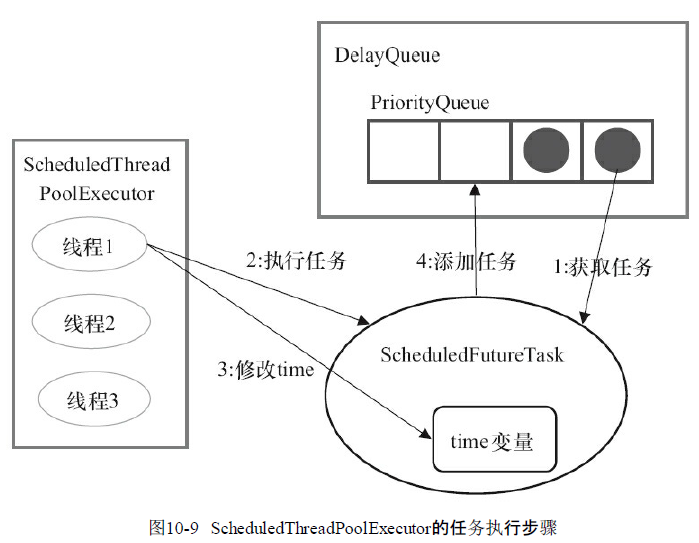
FutureTask详解
Future接口和实现Future接口的FutureTask类,代表异步计算的结果。
FutureTask简介
FutureTask除了实现Future接口外,还实现了Runnable接口。
状态迁移的示意图: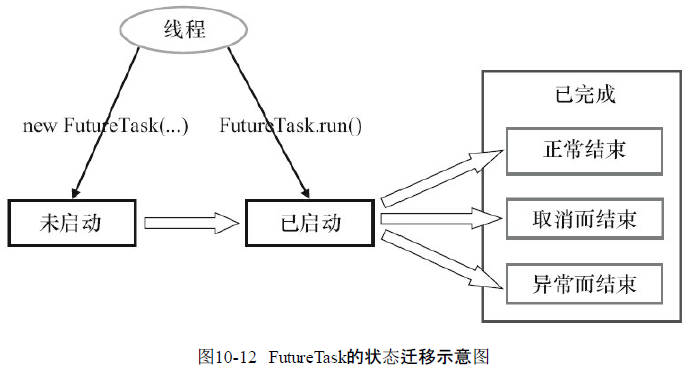
执行示意图: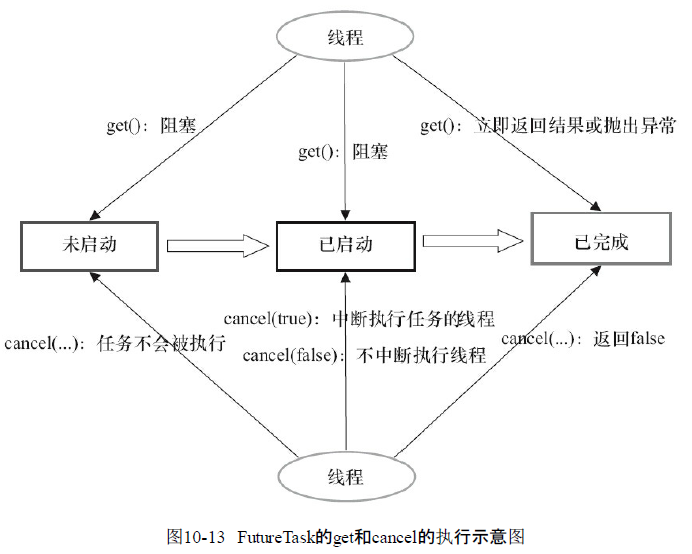
FutureTask的使用
1 | private final ConcurrentMap<Object, Future<String>> taskCache = |
代码的执行示意图: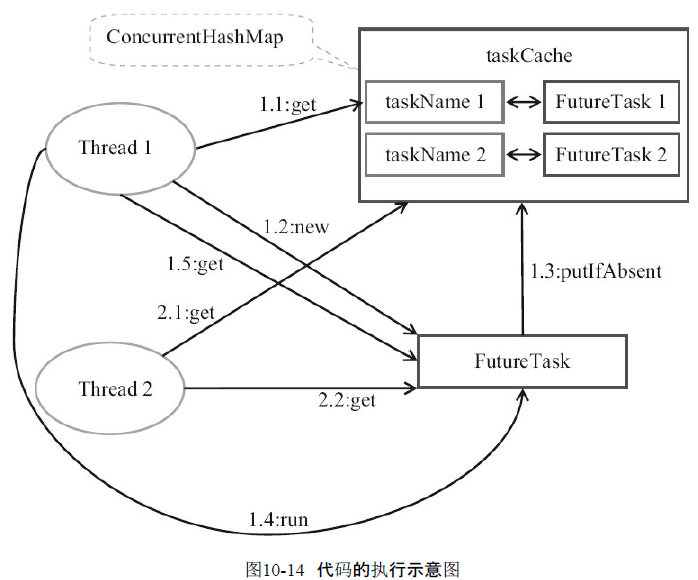
FutureTask的实现
FutureTask的实现基于AbstractQueuedSynchronizer(以下简称为AQS)。
设计示意图: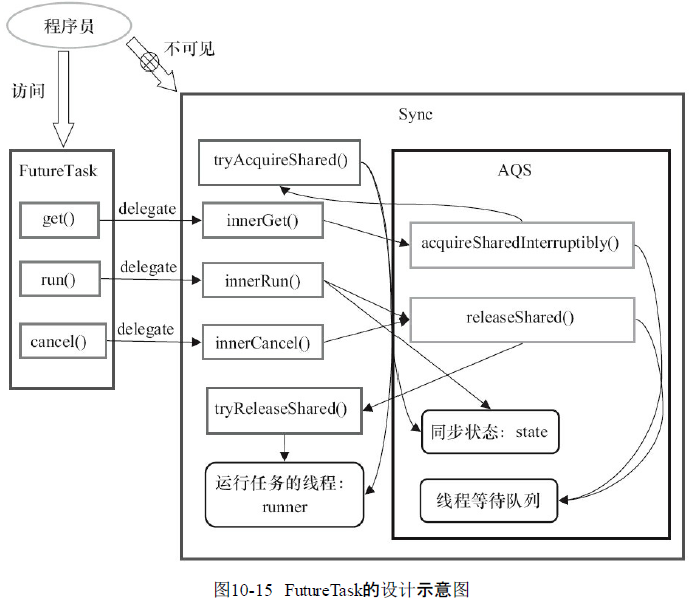
级联唤醒示意图: